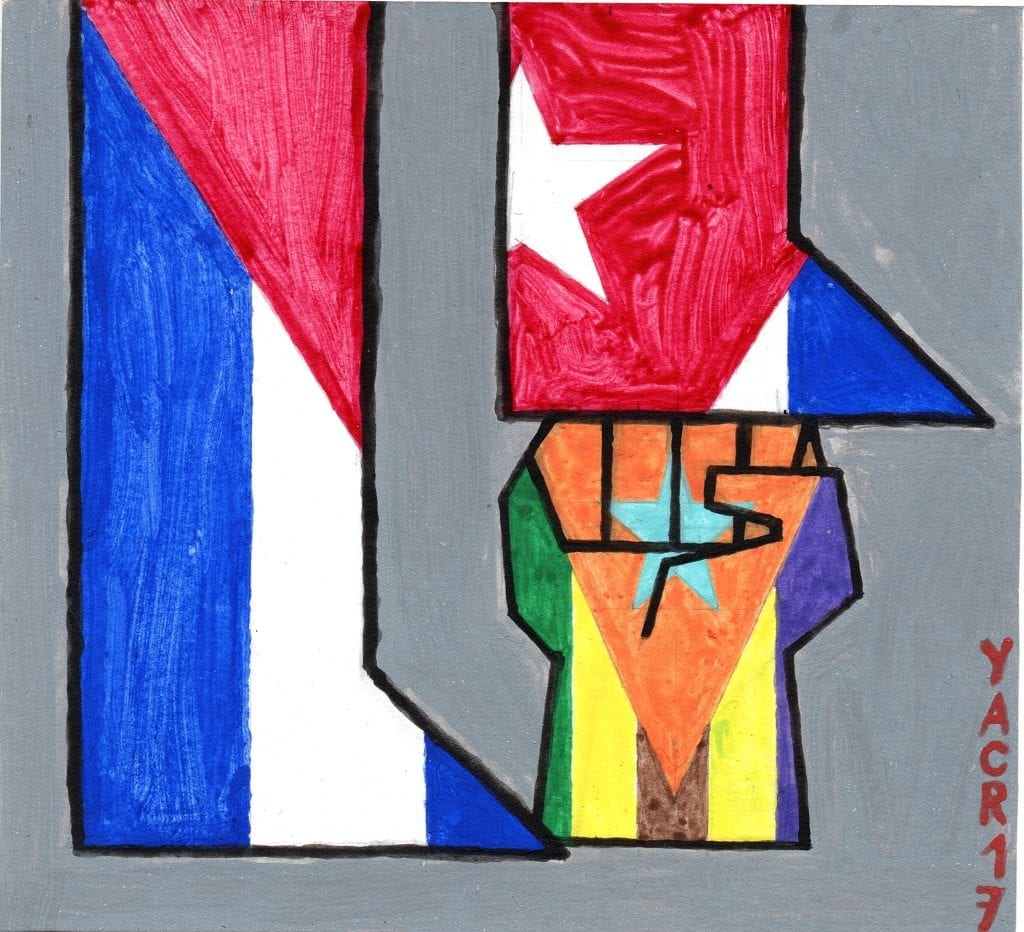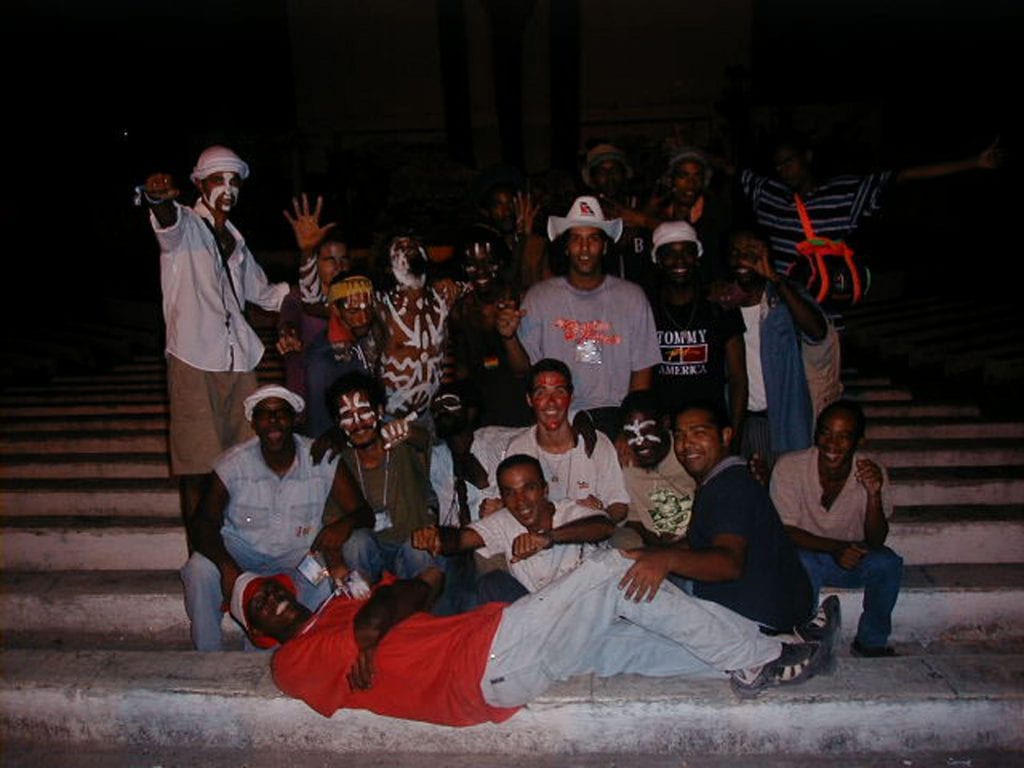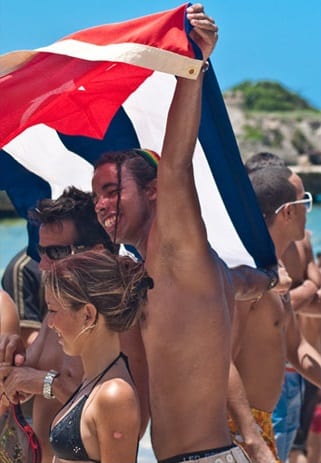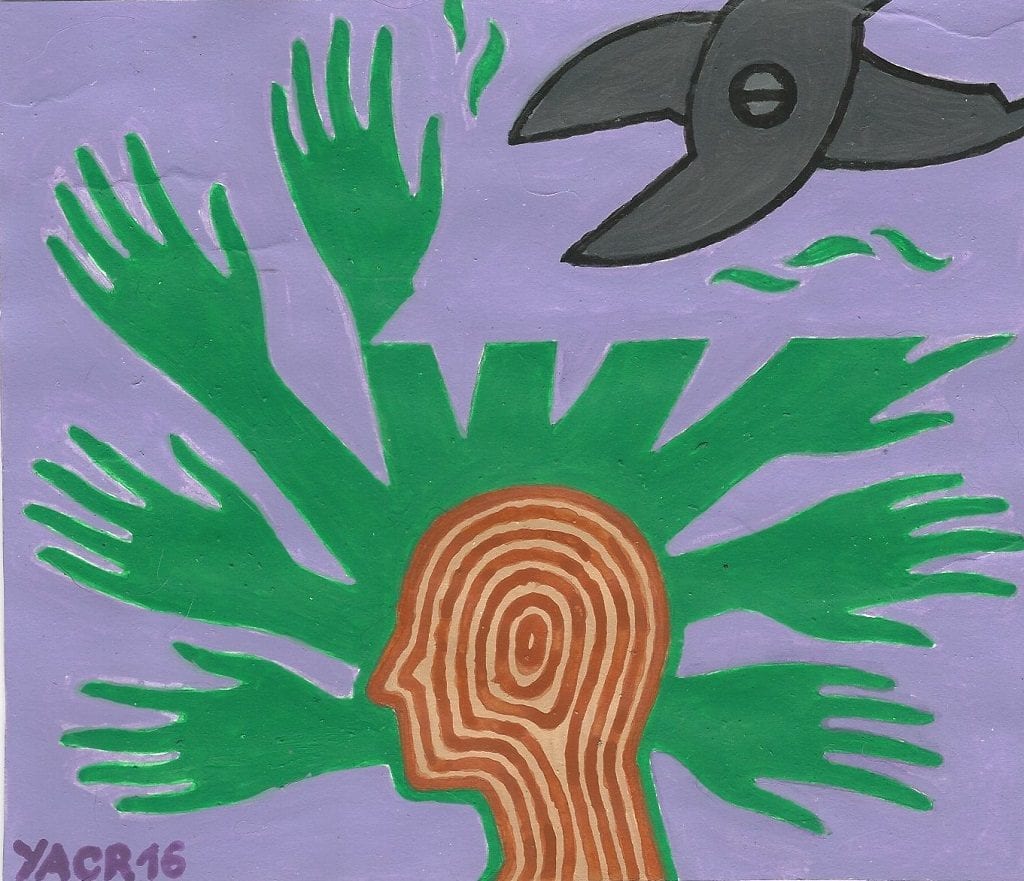Borrowed Freedom: Necessary Art in Cuba
Veronica Vega

HAVANA TIMES — Alternative art on the island has been treated worse than a bastard child. And not exactly by Cuba.
Every movement that has spontaneously come to be, obeying the need to express talent, thoughts, a process of creative searching where existential questions and social ponderings mix, has won spontaneous popularity.
People embrace them and are thankful. For every natural event, there is also a natural audience that identifies with it. Because they are loaded with the explosive nature of the generation of the moment, with their doubts and suggestions, their concept of nation, with their irrefutable right to create and to give their opinions, taking their surroundings as a reference point.
It’s their country, where they were born, where they study or work. The country where they live. Who can prohibit them from taking part in the processes that involve them?
National institutions. Or rather the Communist Party, whose leaders govern every cultural institution in the country, whose mission is not only to “promote and develop” art, but to assess it and legitimize it if it deserves to be.

However, this assessment isn’t centered on the quality of the artistic project and whether it prompts people to think, not even the receptivity level it sparks matters. The more popular a project is, the more suspicious the official gaze is and the more abuse it receives.
I’m not only talking about mere prejudice (which we’ve allegedly overcome and without a public apology ever), like what happened with rock music, whose advocates and models were persecuted.
This also happened with rap music, which has always been an uneasy genre that the government has tried to tame, but not wanting it to thrive. Rock and rap agencies are just government containers of this phenomenon. For example, why aren’t there timba or reggaeton agencies?
Because they are inoffensive genres of music, politically-speaking. Because they create thoughtlessness, hedonism and self-indulgence.

I remember when Rodolfo Rensoli, the coordinator of the Cuban Rap Festival, once told me: “Thanks to the Maleconazo (protest in 1994), we rappers have relative freedom.”
Then, I thought that maybe cultural projects that were born in the mid-’80s such s Paideia, Castillo de la Fuerza, Arte Calle, were the indirect result of events at the Peruvian Embassy and the Mariel exodus (1980). Freedom given so as to let off a little bit of steam and to win some time.
And maybe Alamar’s “Poesia sin Fin” festival or the mass alternative music event “Rotilla” were “tolerated” thanks to the Varela Project (2002) or even to the tension that Cuba’s “Email War” (2007) sparked.
Who knows. What we do know for sure, is that every freedom granted establishes a limit.

Every abovementioned event came to an end. After “Rotilla”, it was “Punos Arriba’s” turn, which the Hip Hop record label awarded and it was the only underground competitive festival in the entire island. Every blow dealt to the alternative is enshrouded in baseless arguments that never include the word “censorship”.
Counter-culture’s work is really tough. It comes to get rid of the static, out-of-date, dead. And Cuban institutions (read here the Communist Party or government) insist on fighting against everything that is blooming.
It doesn’t matter whether the wellbeing of art, morale or the population’s spirit pay for maintaining the status quo.
History repeats itself again and again
The most recent target of artistic censorship has been the #00Havana Biennial. An alternative project that is replacing the 13th edition of the official Biennial, which has been postponed allegedly due to damages caused by Hurricane Irma.
The coordinators of this interesting initiative, Yanelys Nunez Leyva and Luis Manuel Otero Alcantara, have been harrassed and Luis Manuel has even been arrested and imprisoned on alleged charges of “receiving” illegal building materials. In a country where illegal activity is what puts bread on the table every day as a result of the deficit caused by low wages and sustained in the interest of keeping this convenient social vulnerability.

Luis Manuel had already made some noise with previous projects such as the performance “With everyone and for the good of the very few”, when he put forward a lottery where participants paid 2 CUC and the randomly chosen winner received the necessary amount to stay a night at the first 5* plus hotel in Cuba: the sparkling Kempinski Manzana Hotel.
Many of us saw ourselves represented in this action which exposed the reality of ordinary Cubans, forced witnesses and excluded from the luxury that has been satanized for decades in the education we have received.
The couple’s most recent work was a tribute to Cuban poets who committed suicide: some of whom took their lives in Cuba and others while in exile. It was held at a private residence in Old Havana, with limited space. Some of the audience took part by looking in through windows or by just listening from the pavement. It was a free zone for poetry, story-telling, conferences, rap concerts.
If you pan out and take a look at national culture, you will see:
– the general shortage of artistic and recreational opportunities.
– the creative potential of artists (both those who have graduated from arts school and the self-taught), who fall outside of “official channels”.
– how well alternative projects are received.
The question would be:

What harm are artists causing the country in organizing themselves to exhibit their art using their own means?
There isn’t any harm, just benefits. Cuban institutions can and should oversee these initiatives, but they shouldn’t sabotage them.
One of the incentives for non-conventional tourism is the country’s buzzing alternative projects that are new and haven’t been tainted by commercialism and consumerism.
It’s useful to remember that censorship works by unfolding an expensive apparatus that doesn’t even benefit the people, and it’s the people who are involuntarily financing it. In the words of poet Juan Carlos Flores: “Let poets write poetry, let officials work.
Free art has had to leave these institutions. It has also had to leave streets and parks, which aren’t “ours”. It has now sought refuge in private homes, with minimum stages.
It survives because it exists. Because it represents the plurality and complexities of human nature, the inner wealth of man, truth and the future. And it also survives because Cuba wants it to.
—–

If it is impossible to express yourself verbally, do express yourself with art and succeed.